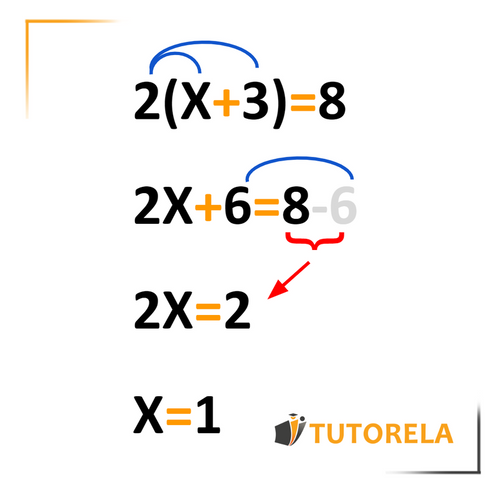Solving an equation using the distributive property is related to the need to open the parentheses as the first step to then be able to simplify similar members. When an equation contains one or more pairs of parentheses, we must start by opening them all and then proceed to the next phase.
Quadratic Equations Factoring Practice Problems
Master solving quadratic equations by factoring with step-by-step practice problems. Build confidence with guided examples and instant feedback.
- Factor quadratic expressions into two binomial terms
- Apply the zero product property to find equation solutions
- Solve quadratic equations of the form ax² + bx + c = 0
- Identify when factoring is the most efficient solution method
- Check solutions by substituting back into original equations
- Recognize patterns in quadratic expressions for faster factoring
Understanding Solving Quadratic Equations using Factoring
Below, we provide you with some examples where this method is applied.
In this equation, we can clearly see some parentheses. To start, we must open them (that is, apply the distributive property) and then we can proceed with the following phases of the exercise.
The result of the equation is .

Practice Solving Quadratic Equations using Factoring
Solve for X:
\( 5(x-8)+\frac{1}{2}=0 \)
Examples with solutions for Solving Quadratic Equations using Factoring
Determine the value of :
Let's first expand the parentheses using the formula:
Next, we will substitute in our terms accordingly:
Then, we will move the 16 to the left-hand side, keeping the appropriate sign:
Finally, we divide both sides by 2:
Answer:
Let's proceed to solve the linear equation :
Step 1: Distribute the 3 in the expression .
We get:
This simplifies to:
Step 2: Simplify the expression by combining like terms.
We simplify this to:
or simply
Step 3: Isolate by dividing both sides by 3.
Thus,
Therefore, the solution to the problem is .
The correct choice is the option corresponding to .
Answer:
Solve for y:
To solve the equation , we will follow these steps:
- Step 1: Distribute inside the parenthesis.
- Step 2: Simplify and combine like terms.
- Step 3: Solve the equation for .
Let's proceed with the solution:
Step 1: Distribute in the expression . This will transform the expression as follows:
.
After distributing, the equation becomes:
.
Step 2: Combine like terms. Notice that is equivalent to :
.
Step 3: Solve for . First, isolate the term with by subtracting 8 from both sides:
.
Next, divide both sides by to find :
.
Thus, the solution for is , which can be written as a mixed number:
.
Therefore, the solution to the problem is .
Answer:
To solve the given linear equation , follow these steps:
- Step 1: Simplify the equation.
Start by distributing the negative sign through the parentheses:
- Step 2: Combine like terms.
Combine the constant terms on the left side:
- Step 3: Isolate the variable .
Subtract 6 from both sides of the equation to isolate the term with :
- Step 4: Solve for .
Divide both sides by -3 to solve for :
Therefore, the solution to the equation is .
Answer:
To solve the linear equation , we'll proceed with the following steps:
Step 1: Apply the Distributive Property.
The equation given is .
First, distribute the 2 across the terms inside the parenthesis:
.
By substituting this back into the equation, we have:
.
Step 2: Combine Like Terms.
Now, combine the terms containing :
.
The equation now becomes:
.
Step 3: Isolate the Variable.
Add 14 to both sides of the equation to isolate terms with :
, which simplifies to:
.
Next, divide both sides by 14 to solve for :
.
Therefore, the solution to the equation is .
Answer: